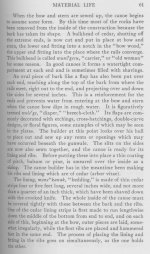A few years ago I emailed the Mariner's Museum in Newport News, Virginia, to ask if they would show me some of the 90-some birch bark canoe models made by Edwin Tappan Adney they have in storage there. It's been long enough that I've forgotten the name of the extremely kind and helpful lady that fielded my (wildly optimistic) emails and met me on site to view the models. I was allowed to pick several models to look at (they keep them behind closed doors and under ideal temp/humidity), and had a really great time looking at these fascinating little boats. I know the Museum has an official (and way more professional) picture book out, which is a companion book to "Skin Boats and Bark Canoes of North America", so these are my photos and in no way reflect the actual awesomeness of these canoes. A really cool opportunity; the workmanship on these things is extremely impressive.
Ojibway Longnose - maybe one of my favorite photos I've taken
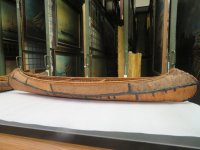
Probably Miqmaq - note the carrying handle at the bow
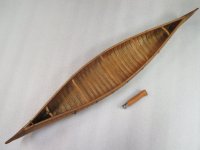
Model of a tiny 8'8" Tete de Boule hunting canoe with paddle
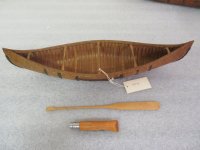
Hull of a Malecite canoe with rough water "shoes" - two sets of overlapping slats, bow set on top of the stern set
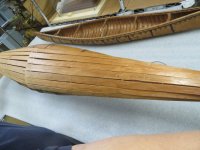
Stem of a Malecite canoe. These hulls were stunning; as finely-shaped as racing canoes.
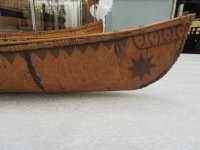
Ojibway Longnose - maybe one of my favorite photos I've taken

Probably Miqmaq - note the carrying handle at the bow

Model of a tiny 8'8" Tete de Boule hunting canoe with paddle

Hull of a Malecite canoe with rough water "shoes" - two sets of overlapping slats, bow set on top of the stern set

Stem of a Malecite canoe. These hulls were stunning; as finely-shaped as racing canoes.

Last edited:

